Clean, spotless hardwood floors can do wonders for a house and make it look so much more elegant and sophisticated. Most homeowners and interior decorators swear by hardwood floors over everything else.
Hardwood floors don’t just make a home look amazing, they are a very practical choice for cold climes. Hardwood is also your best defense from the icy cold floor in those long winter months.
Although hardwood floors look a lot better than tiles or carpet just by their very nature, they do have their set of problems though.
Dirt and grime collect a lot more easily on hardwood floors and are also much more visible.
Thus at the outset, it might seem like a lot of maintenance and hard work to keep up the look and feel of a hardwood floor. But once you know what to do and more importantly, know what not to do, your life is going to get a lot easier.
In this article, we’ll write out a list of tips for hardwood floor maintenance and also set up a sample schedule for you. This will help you keep your floors looking absolutely spic-and-span and prolong the life of your floorboards by a considerable amount.
Just follow our tips and try to go by our schedule as much as possible. So without further ado, let’s get started.
Hardwood Maintenance Basics
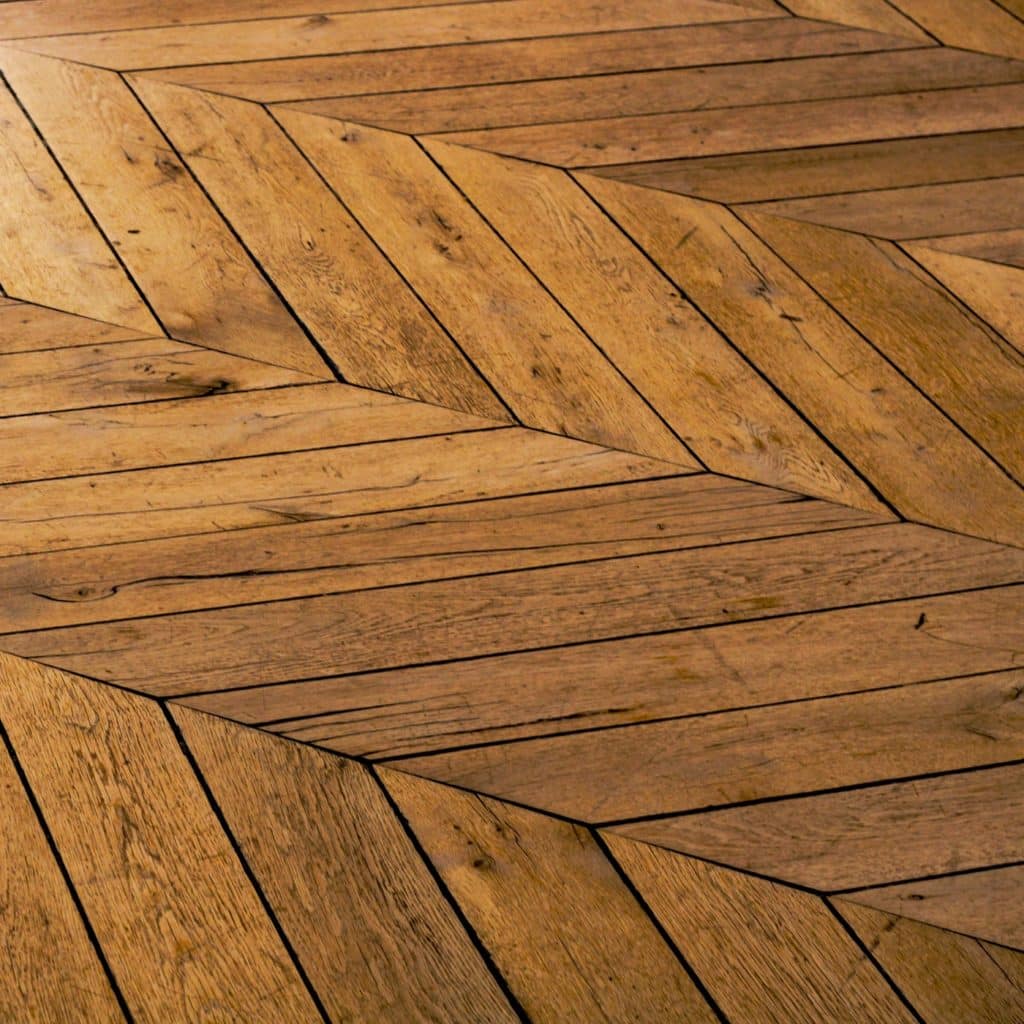
Rule No 1. Never Use Water To Clean Your Wooden Floors
The most important rule of hardwood floor maintenance is that water and wood don’t mix and you should avoid it at all costs. Excessive moisture can be severely harmful to hardwood floors.
Water spills should be cleaned up as promptly as possible, and while cleaning, steam cleaners and wet mops should strictly be avoided. A light mist on the floor should be enough for all your cleaning purposes.
Why shouldn’t you use water?
Steam cleaners and wet mops might cause the laminated wood to start delaminating, and it may also cause the wood to swell up. The color of the finish can get damaged as well – It can become cloudy and whitish, and it might even peel off.
Rule No 2. Avoid using soap-based cleaning products
Soap-based cleaning products should also strictly be avoided when it comes to hardwood floors. Soap has a habit of leaving behind a lot of residues. You will find that these residues build up and are almost impossible to get off, no matter how hard you try.
Even products like vinegar or other acidic solutions can dull the floor’s finish over time.
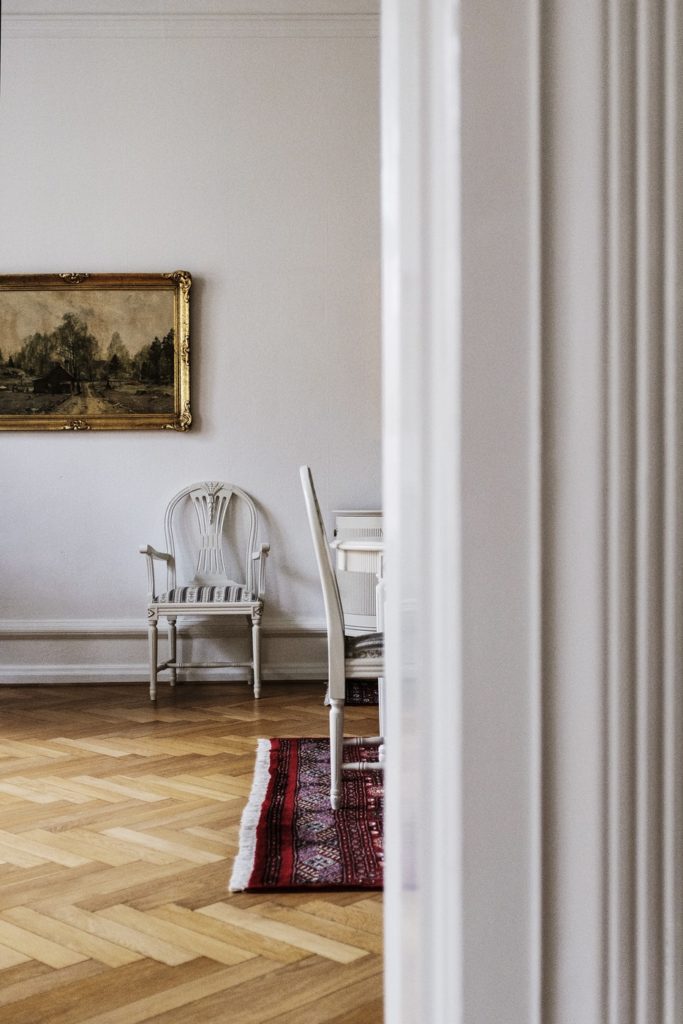
Rule No 3. Use a Vacuum Cleaner
The dust and grime that collects on your floorboards can very quickly go into the floor and slowly wear it out over time. It’s just like sandpaper. Once you step on the dust and dirt, it gets solidified into place in between the cracks and crevices of your floorboard.
This is where your vacuum cleaner comes in. It is perfect for sucking out all the dust and dirt from those hard-to-reach areas where your broom and mop just can’t reach. It doesn’t use any solvents, it simply plucks the trash out of the floor, leaving the floor untouched and unharmed.
If your vacuum cleaner has a beater bar, disengage it or retract it before you start vacuuming. If that isn’t possible then just keep it away from hitting the floor. Also, the wheels on your vacuum cleaner can damage the floor as well. So be careful and gentle while using it. In our opinion, a canister vacuum with a soft bristle wand is best.
Rule 4. Give it a dusting with a microfiber mop or cloth
If you don’t have a vacuum cleaner or you don’t want to use it too frequently, the next best way to clean your floor is to use a microfiber cloth or mop. What makes microfiber cleaning equipment so efficient is that it uses static electricity to collect dirt, dust, and other troublesome particles and gather them in one place.
It does a much better job than your average broom and also doesn’t require you to use water. Our only suggestion is you try to keep the microfiber mop in contact with the floor as much as possible. This practice will keep the dirt trapped and in place on the pad, which you can then quickly dispose of.
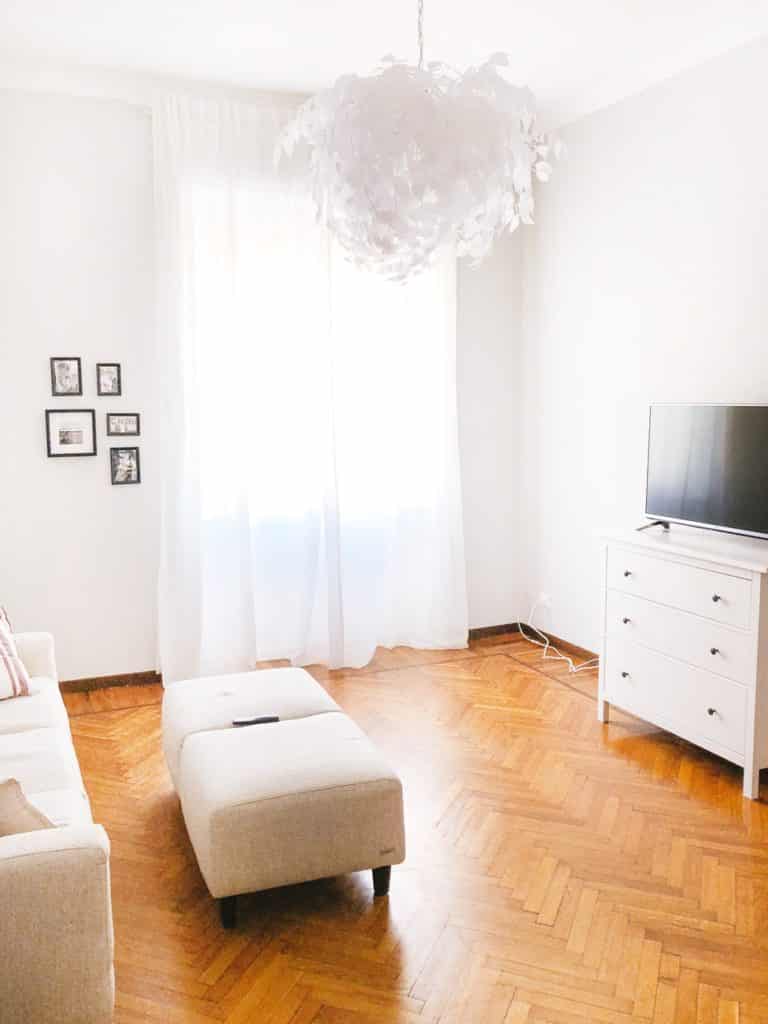
Rule 5. Use mats or rugs
We cannot stress how important mats and rugs are to the health and well-being of your wooden floorboards. We suggest you keep an extra long doormat right from the front door and entrance of the house to some distance inside the house.
A long doormat will ensure that dust, water, ice, dirt, and other foreign particles carried in with someone’s shoes will get stuck to the mat and won’t come into the house and hurt the wooden flooring. While you can always vacuum and spot clean, it’s much easier if you just keep all the dust and dirt out in the first place.
Similarly, you need to keep rugs in high-traffic areas where a lot of people walk around or stand, like in front of the couch or around the TV. These rugs will simply absorb most of the dust and dirt and keep your floorboards nice and clean. An added benefit of these rugs is their ability to improve acoustics and reduce noise by absorbing sound, making them a valuable addition to your soundproofing efforts. Repeated walking also wears down the finish over time. So a well-placed rug can protect you from that problem as well.
However, you do need to ensure that your rugs do not have a backing. Many rugs have a vinyl or rubber backing. These backings tend to trap moisture underneath them, which can hurt and wear out your wooden floor.
Rule 6. Know when to use waxes and restorers
A wax-finished floor, where the shine is wearing off slowly can easily be rejuvenated with more wax. However, you shouldn’t ever apply wax on shellac, varnish, or polyurethane finishes.
Putting on wax on any of these finishes can make the floor immensely slippery and will also cause a buildup that will be hard to remember and which will interfere with subsequent finishes in the future.
Depending on the type of finish of your floor, get a suitable polish for that particular type, and if you can’t, then get a general-purpose floor restorer. Remember to test it out on a corner of the room to see that it doesn’t peel off.
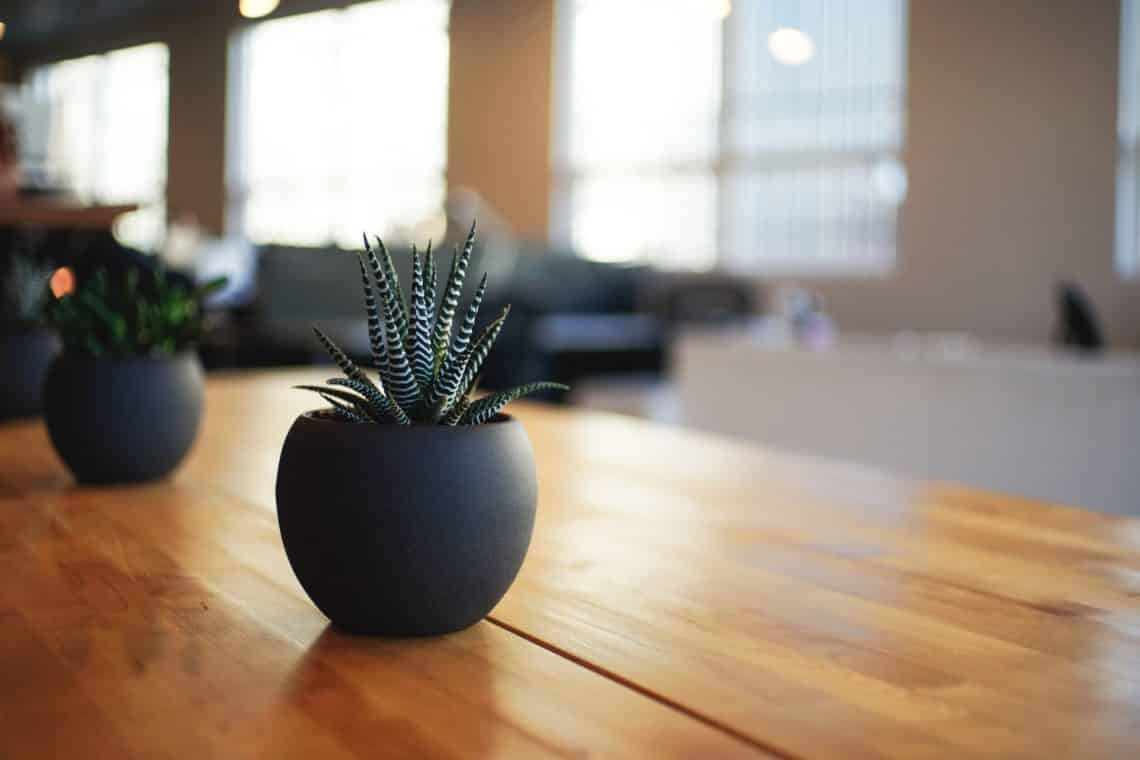
Rule 7. Tread lightly
Even if you can’t enforce a strict “no-shoes” policy, at least ensure that you never wear high heels inside the house. They can easily dent the hardwood floor and leave you with cracks or dents that are very hard to fix.
Another idea you should definitely consider is putting on felt pads on the bottom of all chair and table legs as even chairs and furniture have tremendous potential for scratches and dents. You can save a lot of money in the long run by simply getting yourself these pads for your furniture.
If you have pets, make sure you keep their nails trimmed. Pets, especially cats like nothing better than using their claws to play with or scratch something. Hence keep their nails trimmed down as much as possible so that they don’t destroy your hardwood finish.
Having large rugs is also a benefit in this aspect, that it absorbs the impact of shoes and nails to a certain extent, keeping your floors nice and clean.
Rule 8. Stay Cool
The ideal temperature for wooden floors is in the range of 60 to 80 degrees Fahrenheit, with humidity varying from 30 to 50 percent.
Severe changes in heat and moisture can cause gaps in between the floorboards, or it can start to buckle the planks.
If you can keep the temperature stable at the above range all year round, you’ll lessen the chance of this happening.
Rule 9. Call in The Pros
Sometimes, you just know it’s time to call in the professionals. Many homes with wooden floors have been around for a hundred years, but most of them will have lost their luster by now. If you want to keep it looking new and shiny, you need to apply a fresh coat of varnish about every five years.
If you start noticing gouges, holes, or gaps in the wooden floors – anything that might cause injuries, you should immediately call in your local flooring company before the matter gets any more dangerous.
The tips mentioned above should do a decent job in helping your floor stay clean and spotless. When these tips are included in daily practice, as part of a maintenance schedule, you won’t ever have to worry about your floorboards again.
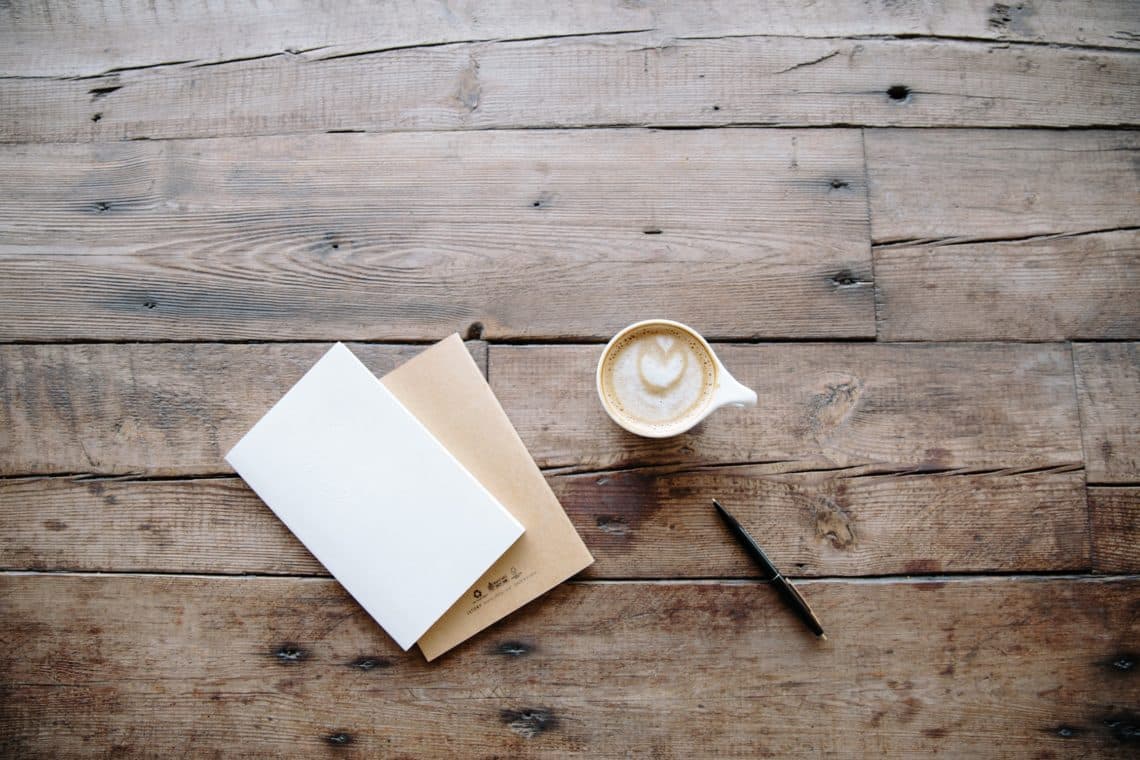
Hardwood Maintenance Schedule
Daily Schedule: Sweep/Dust
As for your daily maintenance schedule, merely dust or sweep the floor, preferably with a microfiber mop. A broom works too. Regular dusting ensures there’s no buildup of dust and dirt. If you let it build up, it gets all the harder to remove all of it later.
Weekly Schedule: Vacuum
Depending on the size of your house and the amount of area covered by the wooden floorboards, vacuuming once a week is absolutely essential.
A vacuum cleaner brings out dust and dirt from all the corners and hard-to-reach areas in between the floorboards or below the furniture.
Monthly Schedule: Polish
Consider polishing the floor once every month. The finish or the protective sealant usually does get the most attention whenever we clean. Waxing the floor fills out microscopic scratches and evens out the surface of the hardwood. Polishing is pretty easy, and it can be done with minimal effort.
Yearly Schedule: Deep Clean
Every few years, your floorboards are bound to come up with some severe problems, like cracks, gouges, holes, and the like. At this point, you might want to consider getting your floorboard a new finish or sanding. Sanding or refinishing totally replaces the old protective layer and will make your floorboard look as good as new.
Related Articles
Using Hardwood Flooring in a Bathroom | Yay or Nay?


